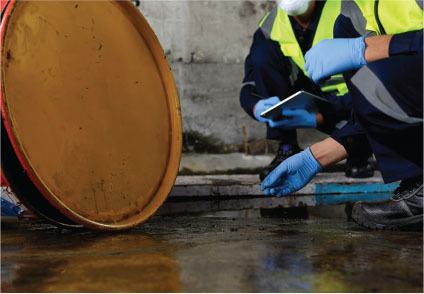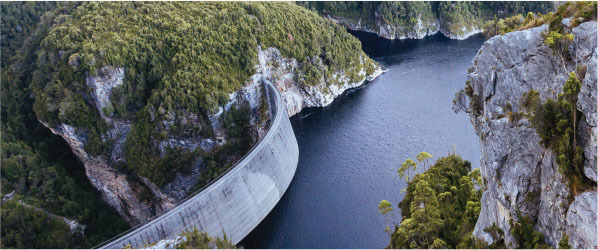January/February 2017
On Ethics: You Be the Judge
Dangerous Conditions
Situation
Fran Carter is a professional engineer employed by Southgate Construction, a contractor hired by the state department of transportation to inspect and repair a series of state highway and parkway on- and off-ramps. Commercial vehicles are not permitted on the parkway. Carter is directed by her supervisor to design inspection and construction scaffolding for a noncommercial parkway cloverleaf ramp with limited height and width clearance. From her personal experience driving on the parkway to and from work, Carter has observed commercial vehicles illegally driving on the parkway. She is concerned that the safety of inspection and construction employees, as well as others, could be endangered if one of these commercial vehicles passes by the proposed inspection and construction scaffolding.
What Do You Think?
What are Carter’s ethical obligations under the circumstances?
What the Board of
Ethical Review Said
During the performance of their professional duties and obligations, engineers are sometimes presented with situations involving an impact on the public health and safety and must decide, after identifying and understanding the situation, how far their obligation reaches in seeking corrective action. This case illustrates one of the classic ethical dilemmas faced by professional engineers in their professional practice.
On several occasions, the NSPE Board of Ethical Review has considered this ethical dilemma; in each case, the board’s conclusion has depended on the specific facts and circumstances involved. As the board has noted before, there is no black-and-white standard that can be applied to these types of cases.
The facts and circumstances in this case are somewhat different in several respects than the situation involved in an earlier BER case (00-5), which involved the closing of a bridge due to rotting pilings. First, the danger involved, while possibly significant, is not nearly as imminent or widespread as the potential bridge collapse involved in BER case 00-5. In case 00-5, as an employee of the local government, the engineer had a specific responsibility for the bridge in question and was compelled both as a professional engineer and a public employee to take appropriate measures to address the issue. Finally, in case 00-5, the circumstances dictated a “full-bore” campaign to bring this matter to the attention of public officials with authority to take immediate steps to address the situation.
In the current case, the limited nature of the danger does not appear to require this level of response. Based on the facts, it appears that prudent action would involve Carter immediately notifying verbally, and in writing if necessary, her immediate supervisor at Southgate Construction of the safety hazards to employees and others due to commercial vehicles passing by while inspection and repair is being performed on the ramps. It is probable that state department of transportation officials, and law enforcement officials as necessary, will also need to be advised of the situation by either Carter’s supervisor or some other appropriate responsible party within Southgate Construction so that appropriate corrective action can be considered and implemented prior to the design and assembly of the inspection and construction scaffolding by Carter and Southgate Construction. This might include heightened law enforcement on the parkway and ramps, closing down traffic on the affected exits, a design accommodating commercial vehicles, or some other method for the protection of the inspection and construction employees as well as others.
Conclusion
Carter should immediately notify verbally, and in writing if necessary, her immediate supervisor at Southgate Construction of the safety hazards to employees and others due to commercial vehicles passing by while inspection and repair is being performed on the ramps.
NSPE Code References
Section II.1.: Engineers shall hold paramount the safety, health, and welfare of the public.
Section II.1.f.: Engineers having knowledge of any alleged violation of this Code shall report thereon to appropriate professional bodies and, when relevant, also to public authorities, and cooperate with the proper authorities in furnishing such information or assistance as may be required.
Section III.2.b.: Engineers shall not complete, sign, or seal plans and/or specifications that are not in conformity with applicable engineering standards. If the client or employer insists on such unprofessional conduct, they shall notify the proper authorities and withdraw from further service on the project.
For more information, see Case No. 12-11.


 Volunteering at NSPE is a great opportunity to grow your professional network and connect with other leaders in the field.
Volunteering at NSPE is a great opportunity to grow your professional network and connect with other leaders in the field. The National Society of Professional Engineers (NSPE) encourages you to explore the resources to cast your vote on election day:
The National Society of Professional Engineers (NSPE) encourages you to explore the resources to cast your vote on election day:


